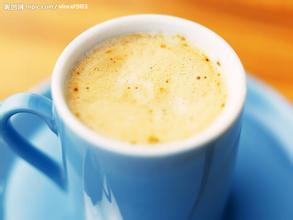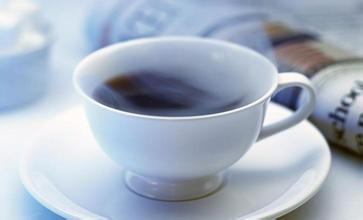Flavor description of Indonesian Golden Mantenin Coffee Bean introduction to the regional treatment of varieties
Flavor description of Indonesian Golden Mantenin Coffee Bean introduction to the regional treatment of varieties
Manning coffee is considered to be the most mellow coffee in the world. When tasting Mantenin, you can feel obvious lubrication on the tip of the tongue and low acidity, but this acidity can also be obviously tasted. Leaping slight acid mixed with the richest aroma, so that you can easily feel the lively factor in the mild fragrance. In addition, this coffee has a faint earthy aroma, and some people describe it as the aroma of herbs. During the Japanese occupation of Indonesia during World War II, a Japanese soldier drank mellow coffee in a cafe, so he asked the shopkeeper the name of the coffee, and the boss mistook him for asking where you were from, so he replied: Mandaining. After the war, the Japanese soldiers recalled the "manning" they had drunk in Indonesia. As a result, 15 tons of Indonesian coffee was transported to Japan, which was very popular. That's how Manning's name came out, and the coffee merchant is now the famous PWN Coffee Company. Known as Mantenin mandheling, it is produced all over Lake Toba in northern Sumatra. Fragrance sellers with unique herbs and trees often mark Lintong Lindong and Mandheling Manning coffee as dry. In fact, the pulp and coffee seeds are often separated by a variety of mixing modes, and the more common is a backyard wet treatment. The smart farmer put the freshly picked coffee cherries into a simple peeling machine made of scrap metal, wood and bicycle parts. Then put the peeled sticky beans in a plastic woven bag to ferment overnight. The next morning the soft pulp and slime that had been fermented were manually washed away. The silver-coated coffee is pre-dried on a sheet in the front yard and sent to the middleman's warehouse to remove the silver skin and further dry. Finally, the coffee was trucked to Port Medan in Medan, the capital of Sumatra, for the third and final drying. It is also reported that in other Mandheling Mantenin producing areas, after peeling, the sticky material is allowed to dry and attach to the beans, just like the semi-washing treatment in Brazil. Then use a machine to remove the sun-dried sticky and silver skin. Finally, it goes through the same two-stage drying, first in the middleman's warehouse and then in the exporter's warehouse in Medan's port of Medan.
The processing process and Sumatran characteristics. I describe these treatments in such detail because it is not clear how the soil and atmosphere and the unusual treatment techniques and the three-stage drying each affect the formation of the characteristics of Lindong and Manning coffee. Only one thing is certain. These treatments occasionally produce excellent coffee and are extremely unstable. Only through the merciless selection in the Medan port exporter's warehouse can the deep texture and unique and low-key rich taste of Lintong Lindong and Mandheling Mantenin emerge from the interference of other smells.

Important Notice :
前街咖啡 FrontStreet Coffee has moved to new addredd:
FrontStreet Coffee Address: 315,Donghua East Road,GuangZhou
Tel:020 38364473
- Prev

Description of the characteristics and Flavor of Brazilian Yellow bourbon Coffee Bean introduction to the treatment method of manor production area
The characteristics and flavor of Brazilian yellow bourbon coffee beans describe the treatment method of manor production area. Other kinds of Brazilian coffee, such as Rio and Parana, can be produced in large quantities because they do not need too much care. Although the taste is rough, it is a kind of coffee with good quality and low price. Because it is distributed all over Brazil and its solid quality varies, it has its own standard (according to the number of sundries).
- Next

Starbucks Uganda Xipi Falls Coffee Bean Flavor description Variety introduction to the Regional treatment method of the Manor
Starbucks Uganda Xipi Falls Coffee Bean Flavor description of the Fairtrade label Coffee is the first product to be affixed to the Fairtrade label, and coffee farmers have gained tangible benefits from it. Chilean FLO producers sold coffee beans last year for $1.26 a pound, compared with 47. 5 per pound on the New York futures market.
Related
- Detailed explanation of Jadeite planting Land in Panamanian Jadeite Manor introduction to the grading system of Jadeite competitive bidding, Red bid, Green bid and Rose Summer
- Story of Coffee planting in Brenka region of Costa Rica Stonehenge Manor anaerobic heavy honey treatment of flavor mouth
- What's on the barrel of Blue Mountain Coffee beans?
- Can American coffee also pull flowers? How to use hot American style to pull out a good-looking pattern?
- Can you make a cold extract with coffee beans? What is the right proportion for cold-extracted coffee formula?
- Indonesian PWN Gold Mandrine Coffee Origin Features Flavor How to Chong? Mandolin coffee is American.
- A brief introduction to the flavor characteristics of Brazilian yellow bourbon coffee beans
- What is the effect of different water quality on the flavor of cold-extracted coffee? What kind of water is best for brewing coffee?
- Why do you think of Rose Summer whenever you mention Panamanian coffee?
- Introduction to the characteristics of authentic blue mountain coffee bean producing areas? What is the CIB Coffee Authority in Jamaica?

